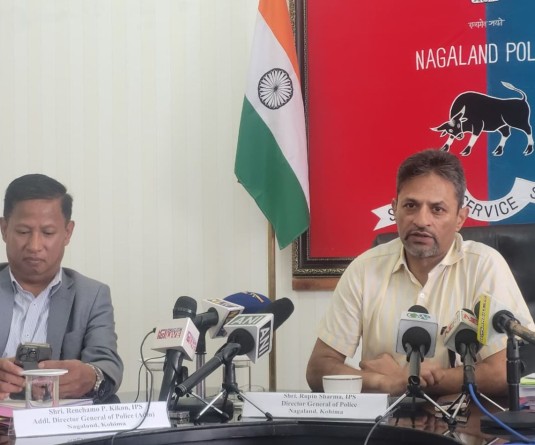
DARC report identifies deficiencies
Al Ngullie
Morung Express News
Dimapur | July 27
For a government with a fast-growing image of being “weak” and “appeasement-friendly,” the assessment report of the District Administration Reorganization Committee could well be a convincing opportunity at some managerial redemption for Nagaland’s policy-makers. That is, if the committee’s counsel is implemented seriously – and not be treated as another witless protocol.
In September 2006, the Government of Nagaland had instated the DARC to study administrative lacunas and equally, infrastructural deficiencies in all administrative headquarters – from the EAC, SDO up to the ADC sub-division stratum. The report from years was recently tabled in the state assembly.
Headed by R. Kevichusa, IAS (Retd.) as chairman, the committee also had Tali Longkumer, IAS (Retd.) as member and Bendangkokba, NCS, as member-secretary. Recommendations were made by the committee to improving administrative services in where deficiencies were identified.
The committee’s final report reads like a blow-by-blow account of a state administrative organization gone wild on lacunae coil – administrative headquarters where none were required in the first place; shortage, understaffing or over-staffing and underutilized officers and personnel. Indispensable for redress, the report reserved special highlights for administrations and the police.
Administration: ‘Irrational’
According to the complete report obtained by The Morung Express, the administrative units are by no means equably or even “rationally” distributed. Examples were cited of EAC HQ for one village, Khezhakeno, with a population of about 3,000. The village is located a mere 6 km from Zuketsa EAC HQ. Likewise, Bhagty EAC HQ is a population of less than 4,000 and it is located just 6 km from Sanis SDO HQ. Another instance is Chiephobozou, a sub-divisional HQ with an ADC and no independent circles in the sub-division.
The ‘irrationality’ was also reflected in the committee’s observation that administrative centers were created or upgraded largely over considerations other than actual necessity. Naturally, the report said, the imbalance in the distribution of administrative units. “Such irrational creation and (upgrading) of administrative units have generated a flood of demands from the people of various areas who felt discriminated upon,” the committee stated. The observation lends corroboration to the almost-fashionable trend for even tiny local quarters to demand administrative conduits.
An interesting finding the report came up with was that Nagaland is over-administered – and by all accounts. Interestingly, the Governor of Maharashtra Dr. SC Jamir during a recent visit to Nagaland had also observed the same phenomenon – that the state was unduly ‘over-administrated.’
Doling out administrative centers left, right and center has its consequences. For instance, the committee found that all the sub-divisional and circle headquarters were understaffed. “In fact some of the circle headquarters have no staff at all,” the report said. Another strange practice that came to fore was “contingency paid” Dobashis (DBs) who run officers’ tasks. To top it, these DBs are not even appointed with the recommendations of the Nagaland Work Charge and Casual Employees Commission or approval of the Cabinet. “In this, the district administration is infringing the Rules and Regulations of the state government,” the report said.
Also, a large number of EAC HQs as well as district and sub-divisional HQs are completely unmanned while the manned ones are understaffed and ill-equipped, with no resources to maintain whatever poor and inadequate infrastructure stand created. It is a fact that cannot be ignored, the report said.
Similar findings include “acute shortage” of infrastructure and equipment required for efficient functioning in all the administrative HQs, including those of the deputy commissioners; underutilized administrative officers at the field level; lack of coordination between development departments; overlapping and duplication of works, especially in the agriculture and allied sectors.
Another nag the committee found was that deputy commissioners are encumbered by a large number of sub-bodies: They shoulder a large number of committees; added to this are the protocol duties and the need to attend various meetings in the state capital due to which they become incapable of concentrating on most works involved in their districts.
“It is to be admitted that in the past, there had been instances where actions had been taken without proper thought; but now it would obviously be very unwise to take decisions based on extraneous considerations,” the committee said referring to the administrative distribution and management.
Police: Many, but few
The DARC also found some gaps in the Police department the government is required to fill. The committee said there is a need to augment the civil police force if the law is to be enforced effectively. Also, out of the total 87 sub-divisions and circle HQs, the are no police stations in 2 ADC, 14 SDO and 41 EAC headquarters, i.e., 58 administrative HQs have no police stations.
The Police department has “sufficient battalions” but quite a large force is deployed for static duties and escorts. Citizens in the recent years have expressed resentment at the government’s all-and-sundry security and escort services given to VIPs but few for law and order and citizens’ security. The committee’s report could be a chance at redemption for the government to pull up its socks on citizens’ security. Shortage in women police personnel was also noted. (Proposals are said to have been already forwarded by the Police department for creation of both categories of posts).




